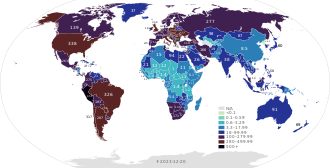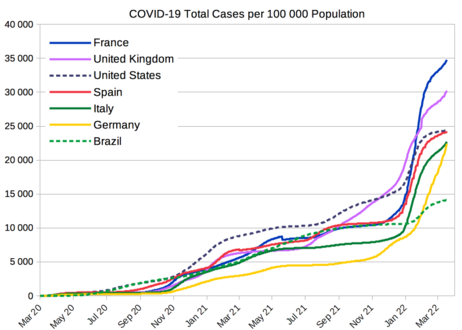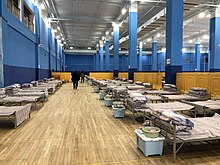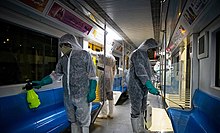- Joined
- Apr 14, 2011
- Messages
- 17,315
- Points
- 113
and gang rapes too.U cannot lockdown poor people, they hv nothing to lose.... cheap festivals are all they enjoy once a year....
3 deaths per million people is hardly a pandemic.
3 deaths per million people is hardly a pandemic.
| COVID-19 pandemic | ||
|---|---|---|
 Confirmed deaths per million population as of 22 April 2021 | ||
| ||
     Clockwise from top:
| ||
| Disease | Coronavirus disease 2019 (COVID-19) | |
| Virus strain | Severe acute respiratory syndrome coronavirus 2 (SARS‑CoV‑2)[a] | |
| Source | Likely via bats[1] | |
| Location | Worldwide | |
| First outbreak | Wuhan, China[2] | |
| Index case | Wuhan, Hubei, China
| |
| Date | December 2019[2] – present (1 year, 5 months and 5 days) | |
| Confirmed cases | 154,759,285[3] | |
| Suspected cases‡ | Possibly 10% of the global population, or 780 million people (WHO estimate as of early October 2020)[4] | |
| Deaths | 3,237,107[3] | |
| Territories | 192[3] | |
| ‡Suspected cases have not been confirmed by laboratory tests as being due to this strain, although some other strains may have been ruled out. |







| Age group | IFR |
|---|---|
| 0–19 | 0.002%–0.01% |
| 20–49 | 0.007%–0.03% |
| 50–69 | 0.25%–1.0% |
| 70+ | 2.8%–9.3% |











3 deaths per million people is hardly a pandemic.

More die there less come here. Simple equationThese worthless shitskins are better off dead.
So it's more than a flu!
ADMIN Caught lying LOL!
